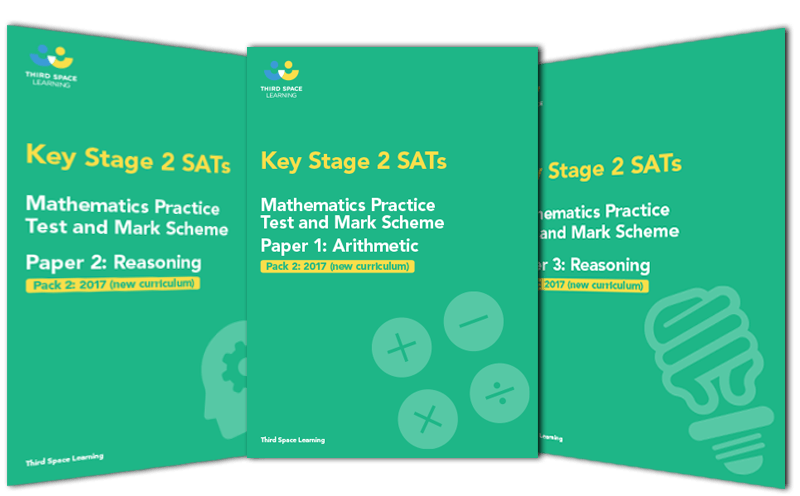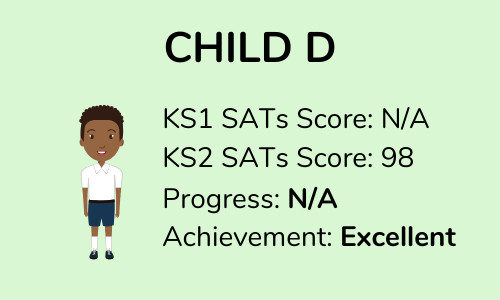Reading Level Explained for Parents First Grade
Primary school grades, and deciphering what your child's report really ways tin be a really tricky thing to go along on meridian of. But when you've got a handle on main school levels, the national curriculum changes, and now information technology'southward all about attainment, achievement and progress. Hither's a quick guide to what you lot demand to know to empathise about the assessments teachers use in school to piece of work out how your kid is progressing.
This web log is part of our series of blogs designed for teachers, schools and parents supporting dwelling house learning.
Schools are already total of jargon and acronyms and cess is an especially important topic, as most parents want to make sure their child is at the right level to go along upwards with their peers in Ks1 and KS2.
Yes we ultimately want them to exist happy and healthy, just nosotros know that the results of their primary school assessments and comparisons to where they should be for their age are important to ensure they go the best outset in life.
In this blog we explicate what parents need to know nigh primary schoolhouse levels – including attainment levels at KS1 and KS2 and in the SATs – and what some of the terms you might hear used to describe assessment levels mean.
What is the current principal school grading system in the United kingdom of great britain and northern ireland?
Post-obit the DfE's changes to the National Curriculum in 2014, well-nigh master schools now have their own cess levels to measure attainment and progress during your child's fourth dimension at school, just the fashion they do this can vary from year one to twelvemonth vi.


FREE KS2 Maths SATs Practice Papers
Get gear up for SATs with this prepare of 6 maths SATs do papers. Papers designed to help your Year 6 improve examination skills and confidence.
Well-nigh main school grading systems are based on an 'age-related expectations' grading organization. Example attainment levels you might see in this system are:
- Working towards the expected standard for their age.
- Working at the expected standard for their age
- Working above the expected standard for their age (also chosen 'Greater Depth' level)
- Working beneath the expected standard for their age.
So a child who is struggling in a bailiwick is considered to exist "working below" or "working towards" the standard, and a child who is doing improve than their peers is "working in a higher place" the standard.
KS1 and KS2 SATs grades explained
Nether the new organisation, SATs attainment is based on a standardised score of 100 instead of levels across the state. This means that scoring 100 in SATs is the expected standard.
This standardised score is not the aforementioned equally an average score, but is based on an "expected" attainment level calculated after the tests have been taken and all scores are analysed.
The standard is a 'reasonable expectation' of what a kid should achieve at their historic period. So a child could score the following in their Yr 6 SATs:
- Maths – 102
- English Reading – 104
- English language Writing – 99
In this example, the attainment scores give us an idea of how the child compares to other children in the state.
With a standardised score of 100, the child in the example above has attained a score above the standard in Maths and English Reading, but not in English Writing (where they score just below 100).
At Key Stage i the lowest score possible is 85, and the highest is 115. At Key Stage 2 the lowest and highest possible scores are 80 and 120.
If y'all're child is sitting their SATs this year, yous tin find out more than about KS1 and K2 SATs scores hither or delve deeper into what SATs are, and why children sit them at all in our Parents Guide to SATs.
Attainment, progress and achievement: what do they hateful?
Permit's have a look now at some of the terminology that is frequently used in describing primary school levels, so we can tackle some examples of what this might look like on school reports for your child.
What is attainment in school?

Attainment, at a basic level, means "a event at a specific point in fourth dimension".
For example, teachers may do 'piffling-and-oft' maths tests to see what children remember from the unit of measurement they've been learning, and this might be shown to parents as a mark out of a full possible score i.eastward. twoscore/50. This is their attainment score for that test.
This is a fairly easy event for parents to understand; we can piece of work out what that score means, and if the children are given back their tests nosotros can see where they went incorrect and help them improve.
National assessments of primary school school attainment
When we move to national testing all the same, things get more complex. Information technology can be harder for parents to know what the results hateful for their child, every bit the type of score yous get back is non every bit unproblematic as a mark out of x.
Every bit nosotros explained earlier, until September 2014 the United kingdom used the 'curriculum levels' system at Cardinal Stage 1, Key Stage 2 and Primal Stage iii.
In this system, pupils were expected to reach certain levels at certain ages. For example, a Year six child was expected to be at Level 4. However the department for education scrapped this grading system as they felt it was as well vague.
The current main school grading system uses a set of statements every bit assessment levels, such as "Working within the expected level of attainment".
Schools volition receive the private score for each pupil but also their ain results compared to the country. So nationally perhaps 72% of all children taking the SATs will obtain the 100 score or above in English Reading, simply the school may have 80% of their students obtaining 100 or above. And so the school attainment is higher than the National Boilerplate for English Reading. These results are available via the Authorities schoolhouse comparison website – merely not until a few months after the test results are released.
In school grades for attainment scores
Your own main school grades and attainment scores volition be based on national expectation but terminology for these in-school assessments may vary depending on whether they are commercially bought in tests which may accept scaled scores or whether they are based on teacher assessment.
Attainment may be judged on what is happening in grade rather than on a test. Considering of this, assessment results will vary from school to school and could be named based on the year group your child is in and the time of the year the assessment is given.
These results only really make sense if the school can tell you what they expect from your kid, and the rest of the grade/yr group, at that time.
This will tell y'all if your child is attaining a similar form to their peers or not. If non – whether it is higher or lower than expected – then progress might be the vital measure for yous to consider.
Your child's school may not give you any type of score at all in between national tests – this is their choice merely you can expect to nonetheless go reports or information which shows you how well your kid is doing, and what you can practise to support them.
If the schoolhouse'due south attainment levels seem as well confusing, a uncomplicated question for parents' evening could be "Is their attainment average for their age?"
What is progress in school?

Progress is a measure which takes a kid'southward current attainment and compares information technology to their prior attainment.
This may or may not include a comparison to their peers to work out if this is classed every bit "good" progress, "expected" progress, or otherwise.
For national results in the Key Stage 2 SATs (Yr vi) progress is compared with their Key Phase 1 SATs results (from Year 2). This also takes into consideration the Key Phase 1 results for children who achieved the same score as them and their progress to Key Stage 2.
This is a complex calculation with our current system just essentially if your child's attainment in the Key Stage 1 SATs was "Expected" for their age, then they would be expected to attain "Expected" at the Key Stage ii SATs also.
That would be considered to exist "expected" progress. If they attained an "Expected" outcome at Key Stage 1 but then did non meet the expected standard at Fundamental Stage 2 and so this would be considered "poor" progress.
Just if they did non attain the expected standard at Key Stage ane and achieved the "expected" standard at Key Stage 2 then they would take "good" or even "excellent" progress.
Nonetheless your child's private progress is not given out – these are calculated as one overall progress score for the school and is part of the schoolhouse comparing dashboard.
Then when does progress matter for your child individually?
Well, a simple example of progress would exist our spelling examination outcome once more. If your child attained 7/ten last week and this week they attained an 8/10 then this shows progress. They got one more than right which is an obvious measure of progress from last week to this week.
On a school report any progress marks will depend on the main school's grading system.
If they are using tests this may exist recorded in results such as the spelling test examples, but students could also be given as a form such as "Coming together" or "Secure" – meaning they are meeting the expected standard or they are secure in the expected curriculum content.
For progress this can then be trickier to work out. One child who is "Meeting" the standard could have made boring progress if they were previously attaining "Above" the standard.
Another child could have what is termed "accelerated" progress if they are now "Meeting" the standard but had previously not been meeting it for the term earlier.
If you are ever concerned or confused by what progress means with the terminology given by schoolhouse then the almost elementary thing to ask is "Are they progressing equally yous would expect?" and their teacher will hands be able to answer this for yous as your child's progress expectations might not be useful when compared to the rest of the class.
What is achievement in school?

Achievement is a term used in schoolhouse which takes into account both the attainment and progress of a pupil.
It looks at where they would expect them to be and charts them on a graph of some sort (at secondary school this is oftentimes called a "flight path" towards their expected GCSE target grades).
For example, a kid who has special educational needs could well take attainment far below that of their age-related peers.
However when the school takes their progress into account they can run into that they are communicable up fast and therefore they are achieving better than expected when you compare their attainment with their progress.
Conversely a child who always achieved well higher up their peers could have a swell attainment score according to the school's grading organisation, but when compared with their progress it may show that they are non achieving equally highly every bit might be expected from their previous scores.
Achievement is a way for schools, and individuals, to be recognised for their efforts and work towards a goal, fifty-fifty if the goal is not reached.
And so a school which has a lower than National Average attainment score for English Reading could have a very high progress mensurate.
This achievement measure takes into business relationship the 'narrative' of the attainment levels. Maybe they have an intake of mostly pupils from disadvantaged backgrounds, for example, or a higher than average percentage of pupils joining the school late due to many children moving into and out of the area (near a military base of operations for instance).
So despite having depression results overall in the SATs tests, this could correspond faster progress than expected for those children.
How exercise attainment, progress, and achievement relate to each other?
To sum up how attainment, progress and accomplishment impact a child's grades at primary schoolhouse. hither are some examples:
Child A scored highly on their Central Stage 1 SATs. That is good attainment in Key Phase 1. In the Key Stage 2 SATs they scored highly once again. This is proficient attainment in Key Stage two. This also shows average progress and expected achievement for this child.

Kid B scored poorly in the Key Stage 1 SATs then has poor attainment in Key Phase 1. In the Key Stage 2 SATs, nonetheless, they scored highly.
This represents practiced attainment for Primal Phase two. It too shows accelerated progress from Key Stage one to Key Stage 2 and therefore is an excellent achievement for this child.

Child C scores poorly in the Key Stage 1 SATs then has poor attainment for Key Phase 1. They score the nationally expected standard in the Key Stage ii SATs which represents average attainment for Key Stage 2.
Although their attainment is but average this is practiced progress for this child compared to their starting betoken so therefore still a very good achievement.

Child D did not have the Fundamental Stage 1 SATs and started the school in Twelvemonth five, arriving from overseas and speaking no English on arrival at the school. They achieved below the expected standard in Key Stage 2 SATs but only missed the expected standard past 2 points.
This is classed every bit beneath expected attainment. They take no official progress score due to missing out on the Key Stage i SATs.
All the same, due to them starting with no English at all and only being ii points off the expected standard this is still a really skillful accomplishment for this child and does bear witness good progress even though in that location is no official score.

Although there are some changes which even teachers have to read upwards on from year to twelvemonth with the national tests, the terminology of attainment, progress and achievement is ever the same in schools. So if you have any questions for your kid's teacher you lot can frame them effectually these terms!
Online ane-to-one maths lessons trusted by schools and teachers
Every week Third Space Learning's maths specialist tutors support thousands of primary school children with weekly online 1-to-1 lessons and maths interventions. Since 2013 we've helped over 100,000 children go more confident, able mathematicians. Learn more than or request a personalised quote to speak to united states of america about your needs and how we tin can help.
Source: https://thirdspacelearning.com/blog/primary-school-grades-explained/
Post a Comment for "Reading Level Explained for Parents First Grade"